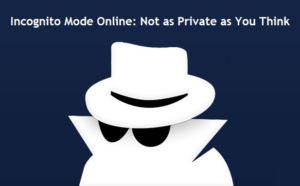

The Brave browser uses built-in ad and tracker blocking, and offers a Virtual Private Network to ensure your online activity remains hidden from advertisers, websites, Big Tech, and even your Internet Service Provider (ISP). Unlike most browsers, with Brave your online activity is always private. To achieve real security, you’ll need to use a private-by-default browser like Brave. While Incognito does offer some privacy protections, with Big Tech browsers like Chrome and Edge, you can still be tracked regardless of what kind of window you open.

Toggle on the Allow in Private setting.Īs discussed, you shouldn’t rely solely on Incognito mode for online privacy.Find the extension you want to allow in Private windows.Open the Brave browser, and click the “≡” menu bar at the top of any window or tab.Like other browsers mentioned above, Brave automatically disables extensions in Private browsing mode.
#PSST INCOGNITO MODE WINDOWS#
Click the “…” menu beside the extension’s name.Įnable extensions in Brave private windows

Like Firefox, Microsoft Edge calls Incognito mode “Private Browsing mode.” And like other browsers, by default Edge disables extensions in private windows. Next to Run in Private Windows, select Allow.Įnable extensions in Microsoft Edge private windows.Click the “…” menu beside the extension’s name. Under Manage Your Extensions, find the extension you want to allow in private windows.Open Firefox, and click the “≡” menu bar at the top of any window or tab.Like Chrome, Firefox doesn’t automatically allow extensions in Incognito or Private windows. Find the extension you want to allow in Incognito windows.Įnable extensions in Firefox private windows.Open Chrome, and click “⋮” at the top of any window or tab.Generally, Chrome extensions won’t work in Incognito mode. Enable extensions in Google Chrome Incognito windows Below are instructions to do so for some major browsers. Usually, extensions you’ve downloaded in your browser will need to be specifically enabled for Incognito (or private) windows.
#PSST INCOGNITO MODE HOW TO#
With that context, here’s how to use extensions in Incognito or private windows. An extension that’s vulnerable to hacks will remain so whether you’re in a regular or Incognito / private window. One other note: Enabling an extension in Incognito or private mode doesn’t somehow change the extension itself, or make it any more secure.


 0 kommentar(er)
0 kommentar(er)
